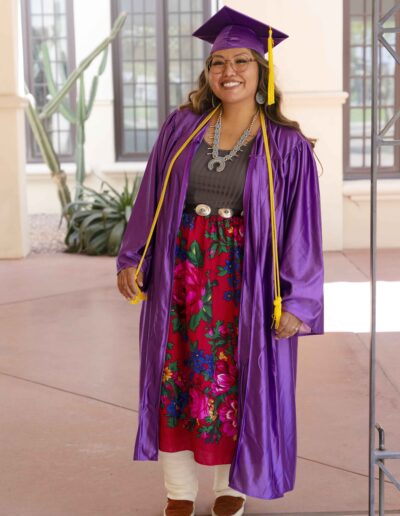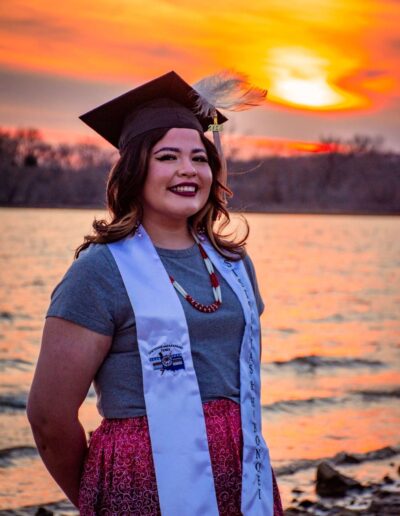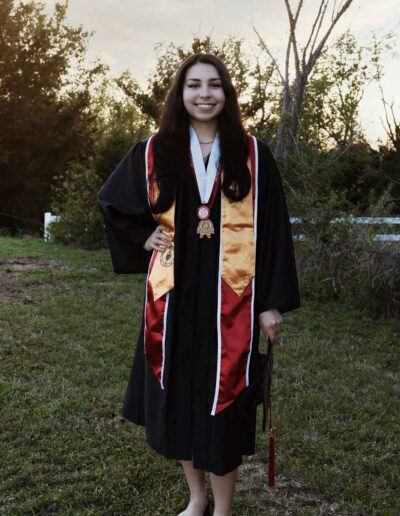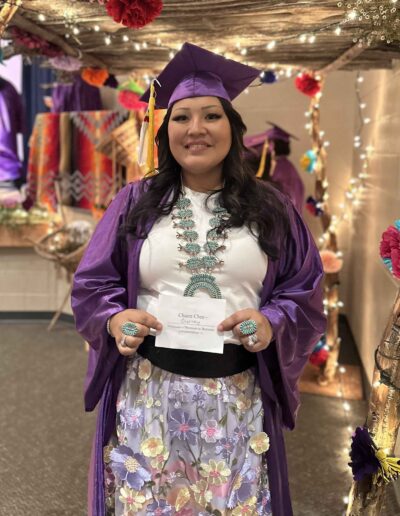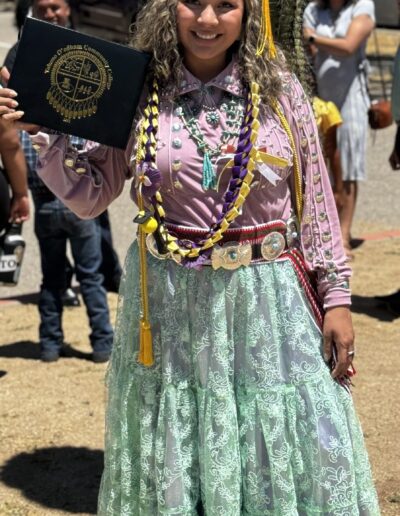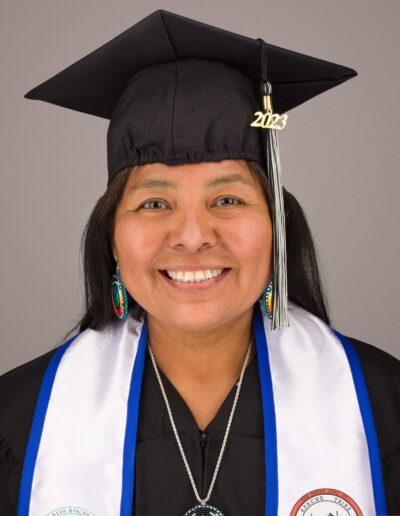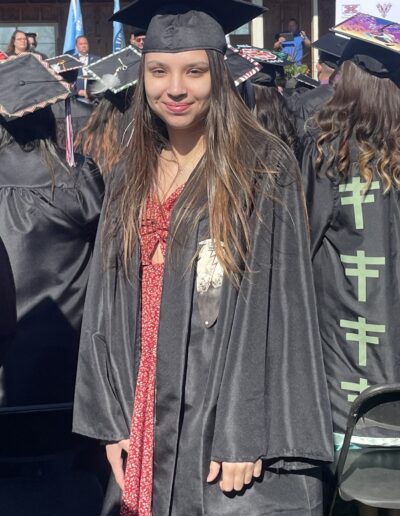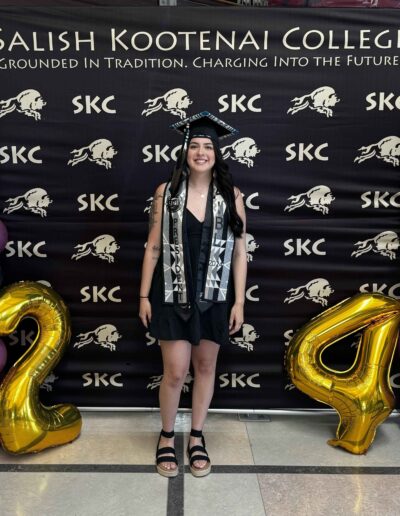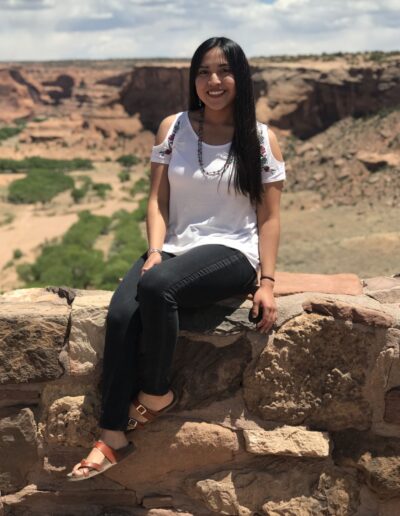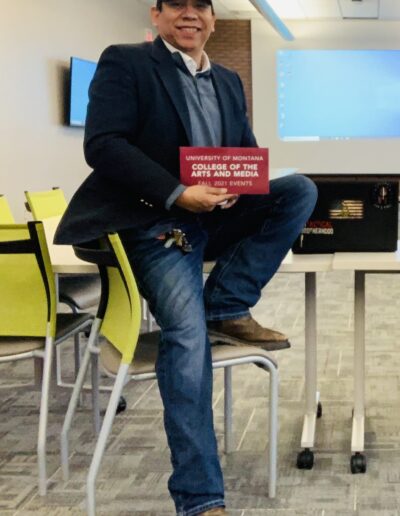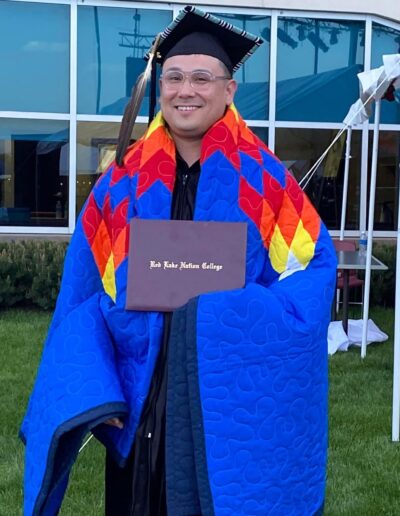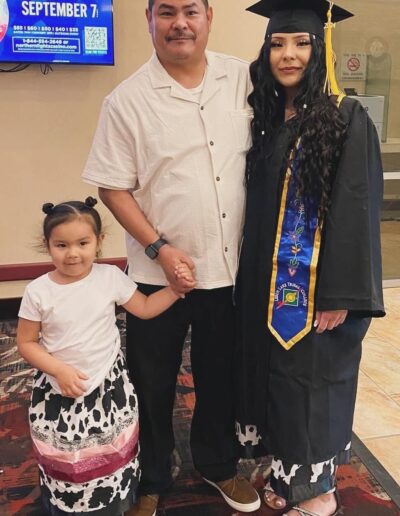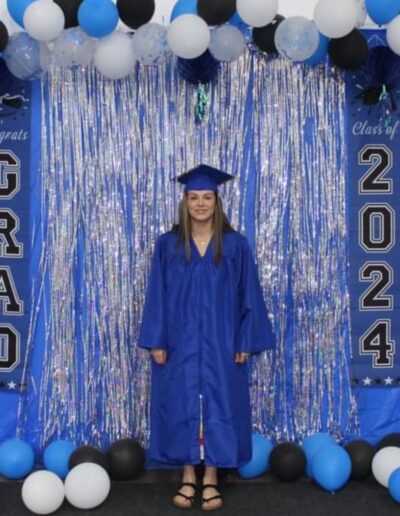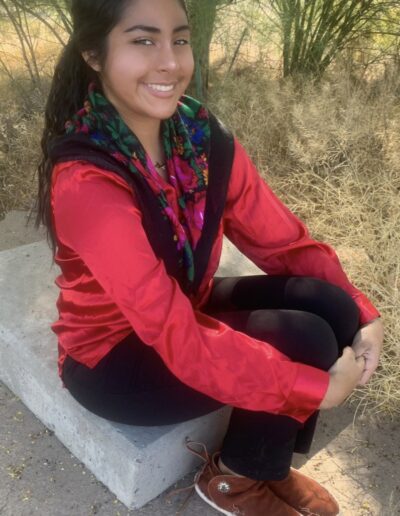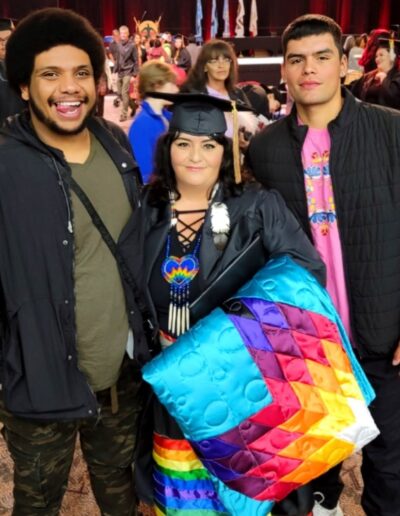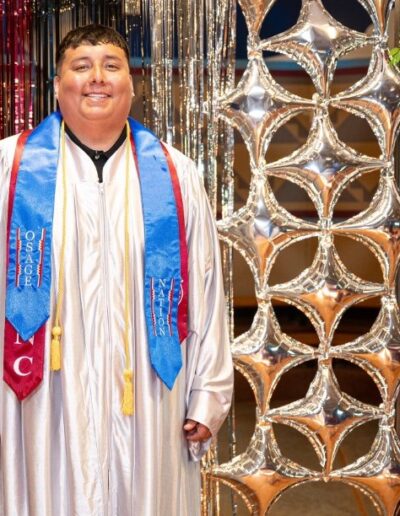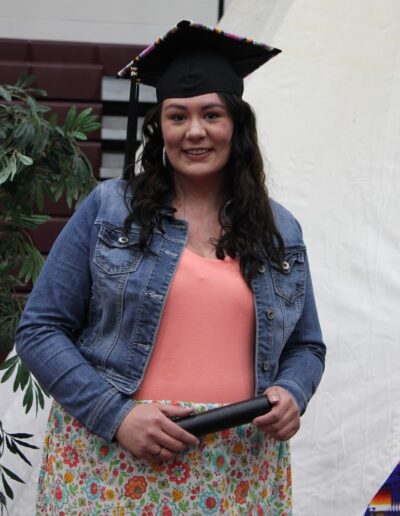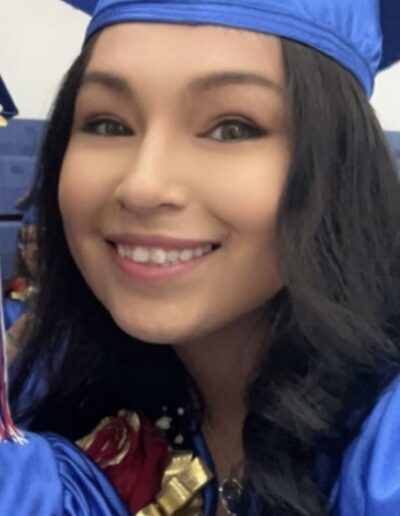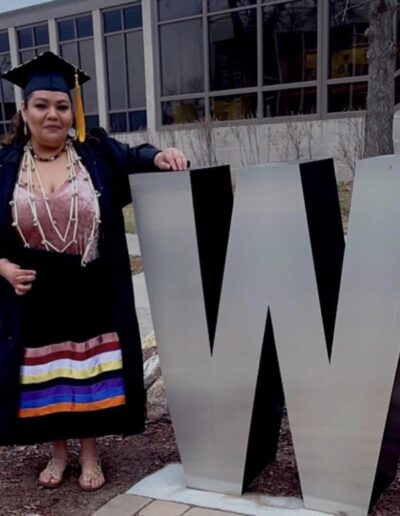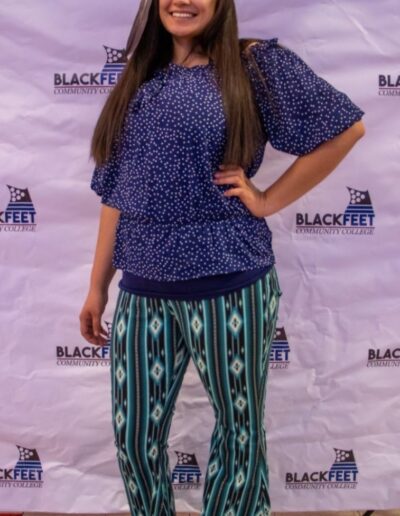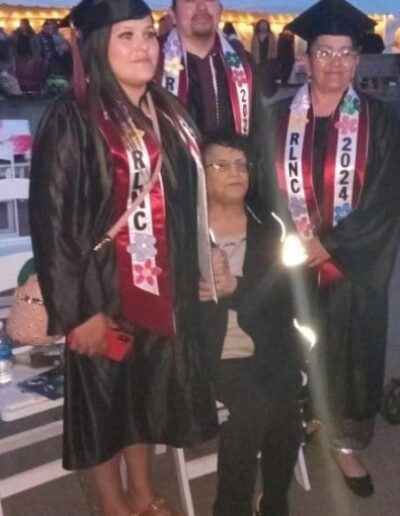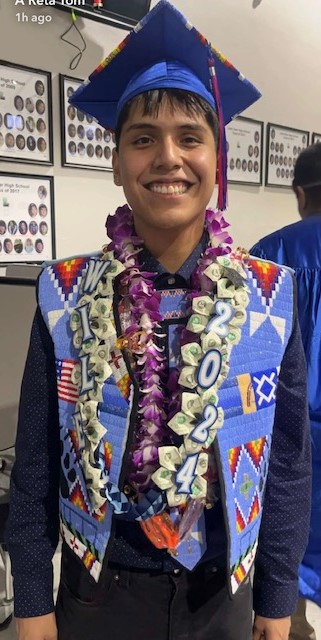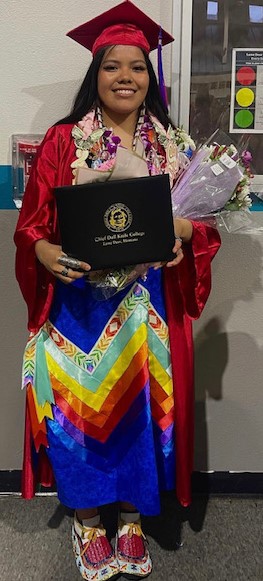Short Answer Questions
Tips for The Full Circle and TCU Scholarship applications
These sections are your chance to share your story and give readers an opportunity to see how a scholarship would help you achieve your stated educational and professional goals and require you to discuss three elements: an obstacle that you have overcome in order to get to where you are now; your educational goals and how this scholarship will help you achieve those; and how your education will help your Native community.
We recommend that you type out your responses to the short-answer question in a Word document (like this template) to ensure safe keeping if you need to abandon the application before submission.
To enhance this section, start by creating an outline of your thoughts and initial answers to each question. The outline does not need to look perfect, but it will allow you to start thinking about and organizing these questions and how they relate to each other.
Here are two sample outlines to help get you started:
- A Visual Outline for those who prefer to see the outline as part of the big picture.
- A Textual Outline for those who prefer a more linear approach.
- Whichever outline you choose, remember that they are not meant to be exhaustive. They are designed to help you organize your thoughts and begin planning for writing your final responses.
- There is no right or wrong answer for these questions, but it is very important that you provide a thorough response to each short-answer question.
As always, don’t forget to check your grammar and spelling!
NOTE: The short-answer section is ONLY available in the application, not in the profile. This means you must have all of your application ready (INCLUDING YOUR TRANSCRIPT READY TO UPLOAD) when you answer these questions; otherwise your answers will not be saved.
Related Pages
Students Social Media
News & Events
There’s Still Time to Apply for Scholarships from the American Indian College Fund
There’s Still Time to Apply for Scholarships from the American Indian College Fund
Take Advantage of the more than $21 million in award opportunities for the 2025-26 school year
Denver, Colo., May 15, 2025 — It’s never too late to pursue a higher education and it’s never too late for potential Native scholars to apply for funding to make their academic dreams come true through the American Indian College Fund (College Fund). Our application season runs until the funding runs out; however, students who apply by May 31 receive priority.
A simplified application process lets students apply online to be considered for the College Fund’s 385 scholarship programs which provide more than $21 million in funding every year. Award amounts vary, but the average scholarship ranges from $2,000-$3,000.
Enrolled members of federally recognized or state recognized Tribes, or descendants of enrolled tribal members, are eligible to apply. Students do not have to choose a college or university before applying. Students do not have to complete the FAFSA before applying but it is recommended for maximizing financial assistance, and the College Fund has experts who can help you with the process as needed.
Learn more and apply at https://collegefund.org/students/scholarships/
About the American Indian College Fund— The American Indian College Fund has been the nation’s largest charity supporting Native higher education for 35 years. The College Fund believes “Education is the answer” and provided $20.5 million in scholarships and other direct student support for access to a higher education steeped in Native culture and values to American Indian students in 2023-24. Since its founding in 1989 the College Fund has provided more than $349 million in scholarships, programs, community, and tribal college support. The College Fund also supports a variety of programs at the nation’s 34 accredited tribal colleges and universities, which are located on or near Indian reservations, ensuring students have the tools to graduate and succeed in their careers. The College Fund consistently receives top ratings from independent charity evaluators. It earned a four-star rating from Charity Navigator, a Gold Seal of Transparency from Guidestar, and the “Best in America Seal of Excellence” from the Independent Charities of America. The College Fund was also named as one of the nation’s top 100 charities to the Better Business Bureau’s Wise Giving Alliance. For more information about the American Indian College Fund, please visit www.collegefund.org.
Reporters: The American Indian College Fund does not use the acronym AICF. On second reference, please use the College Fund.
Celebrating Native Grads Across Indian Country
We know it takes hard work and dedication to complete your education journey, whether a high school diploma, a GED, a certificate program, or any number of college degrees. Setting a goal, studying, and steadily working towards it while juggling the demands of family, community, cultural practices, and more are not easy—even if you all make it look easy!
Whatever your path, whatever your journey—whether you are continuing to a new job, beginning college, entering new phases of your life, or expanding your knowledge and responsibilities in your current role, congratulations on investing in yourself!
Tag us in your photos @NativePathways and be sure to use the hashtags #NativePathways and #EducationIsTheAnswer.
We wish you every success as you step onto your new path! We know each and every one of you will use the gifts the Creator gave you and your education to do great things!
Indigenous Education is a Ceremony: Honoring Our Youngest Learners
By Chenoa Yakokahslote Webster, College of Menominee Nation Teacher Education Student, Indigenous Education Studies Intern, and American Indian College Fund Ambassador
2025 Ihduwiyayapi: Advancing Indigenous Early Childhood Education Grant Program
On March 1, 2025, College of Menominee Nation’s (CMN) Teacher Education Department hosted its third annual Honoring Indigenous Education Round Dance in Keshena, Wisconsin. This event brought in over 700 community members including youth and families alongside students, educators, and elders. Initiated by the teacher education students three years ago, the round dance is more than just a celebration or gathering. It is a reinforcement of our traditional ways of knowing and being. It is a true affirmation that Indigenous education is a living and breathing ceremony of shared experience and life.
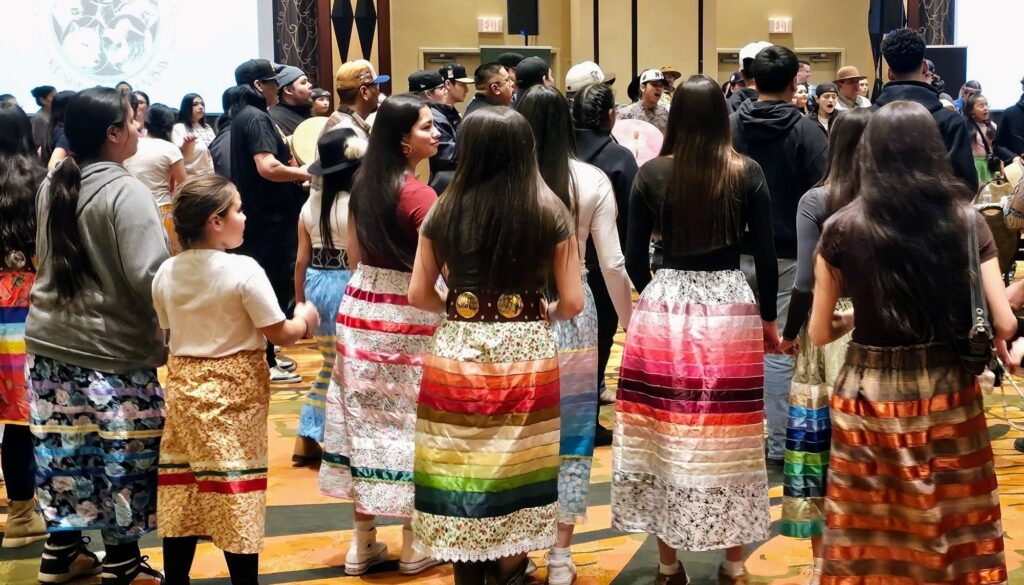
Participants enjoying the Honoring Indigenous Education Round Dance.
CMN’s Meniken project, supported by the American Indian College Fund’s Ihduwiyayapi: Advancing Indigenous Early Childhood Education Program, is working to enhance cultural knowledge and teaching capacities of CMN’s teacher education students. This includes programming such as the round dance, hosting monthly talking circles, and cultural workshops that promote mentorship and intergenerational learning that will be passed down to the students we teach and work with. For the teacher education students involved with the Meniken project, the round dance was an opportunity to apply and expand their learning within a living classroom, while also developing professional skills in event coordination and community engagement.
The most powerful presence at the round dance was that of our youngest learners who eagerly joined the circle. They absorbed every beat of the drum, every movement of the dances, and every lesson woven into the experience. Through the eyes of our youngest children, Indigenous education is not about sitting at a desk or memorizing facts. It is about doing, feeling, and being part of the community through hands-on and meaningful participation. At the round dance, I watched how toddlers were guided by their older siblings and how parents encouraged their little ones to take their first steps into the circle. Our youngest learners looked up to everyone with wonder, and they were filled with love as the circle expanded around them. Education happened at every moment and children were learning not just how to dance, but how to listen, how to follow, and how to take their place in the community. This is the true foundation of Indigenous education, and it starts with a sense of belonging.
The youth essay contest was a new and exciting addition to the round dance this year. Students were asked, “What does Indigenous Education mean to you?” Their answers were profound and reflected deep understandings of identity, community, and the importance of culture in learning. One child wrote, “I learn when I dance. I feel happy when I hear the drum. It makes my heart feel good, like my family is all around me.” Another expressed, “When I move to the songs, I feel like I am supposed to be here. It helps me know who I am.”
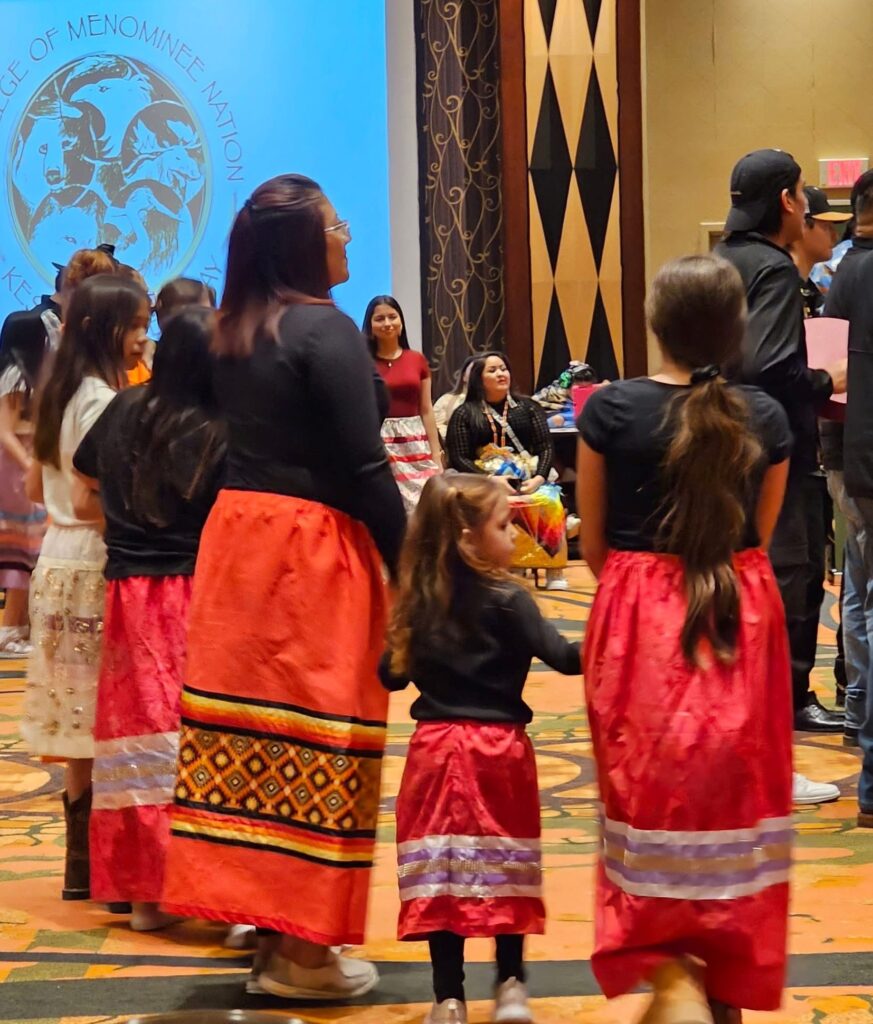
Red ribbon skirts, it’s a family affair.
These beautiful and heartfelt words show the impact of an education that is inherently rooted in cultural experience. CMN’s faculty and advisors are focused on instilling in their students that learning is not just about acquiring knowledge, but about nurturing identity, confidence, and a sense of place. Our students are being taught how to incorporate Indigenous knowledge and intellect with modern educational practices, so that all students, especially Indigenous children, experience learning that is meaningful, culturally responsive, and empowering.
Indigenous education today faces significant challenges, not to mention a long and dark history of attempts to control and erase Indigenous knowledge systems. Tribal colleges and universities like CMN often operate with limited resources, striving to provide culturally relevant education amidst systemic inequities. Events like the round dance demonstrate our communities’ commitment to revitalizing our educational practices. No policy or funding cuts can take what we pass down through our teachings, songs, and love for future generations. This moment in our history is a call to reclaim, redefine, and reconstruct our educational pathways with the knowledge and reminder that education, when rooted in our cultures and communities, is medicine.
One young writer in our essay contest captured this feeling, “When I dance, I feel strong. When I hear the drum, I feel like I belong. Indigenous education means learning with my whole heart.”
The round dance showed us a glimpse of the future, and it is filled with youth who know that they belong. Indigenous education is ceremony, and with every dance, song, and teaching shared we are continuing the cycle of planting seeds for the next generation to thrive. The foundations we build today will carry our children forward, ensuring they grow up knowing they are valued, loved, and connected to their culture, their community, and the greater world. In the steps of our youngest dancers, we see a future that is strong, proud, and full of possibility, and with their words, we understand, “When we dance, we pray. When we sing, we heal. When we learn, we remember. And that’s why Indigenous education is everything.”
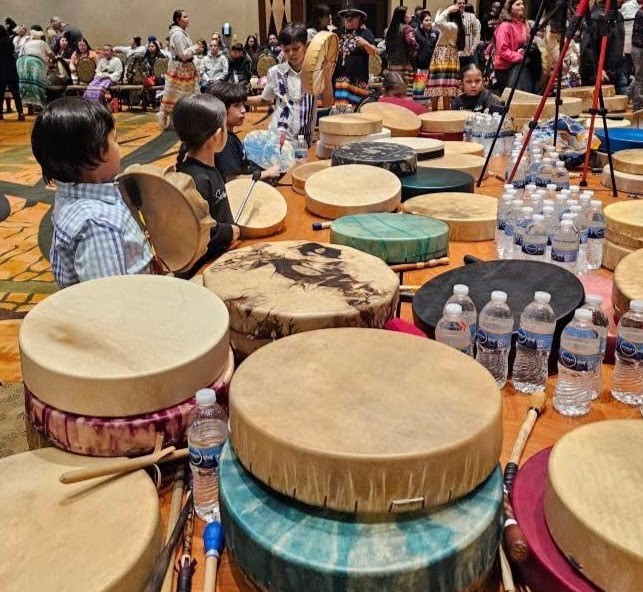
Little ones are soaking up the opportunity to learn from the Round Dance drum groups.

